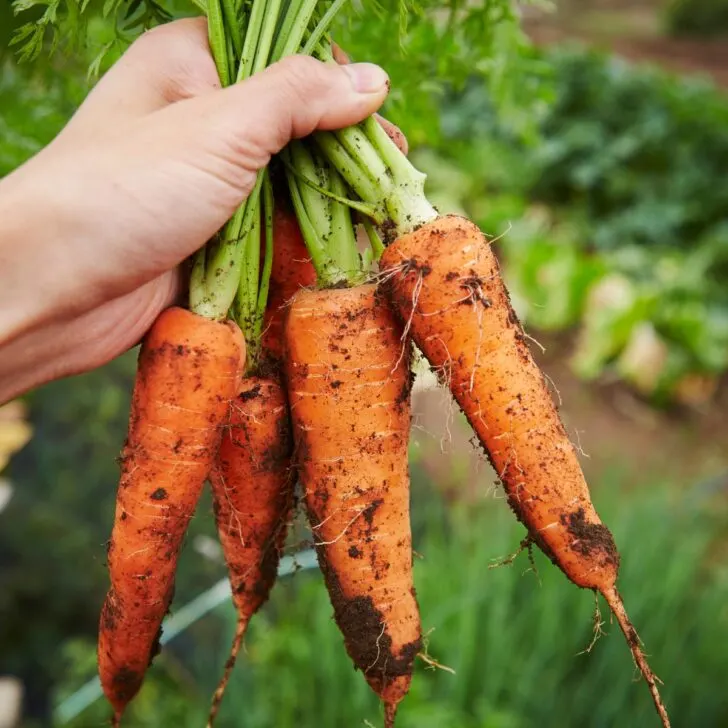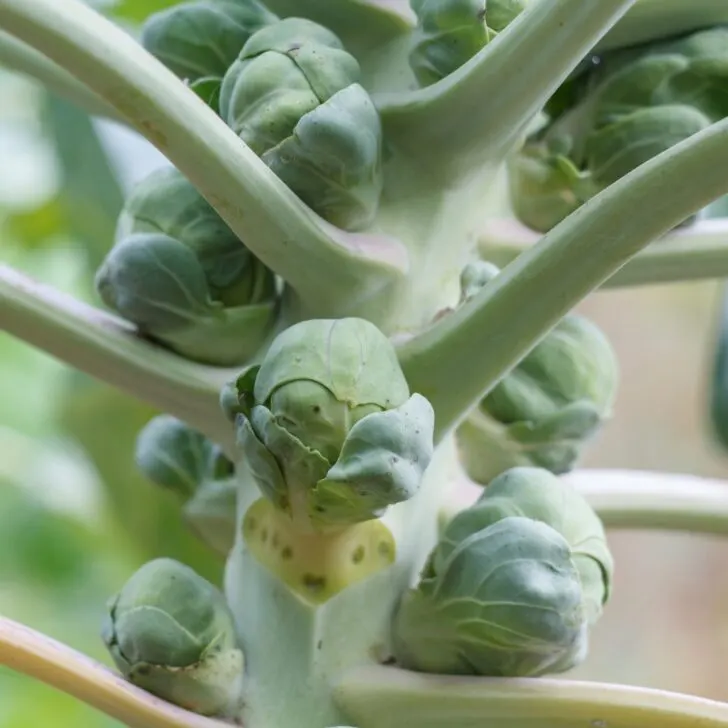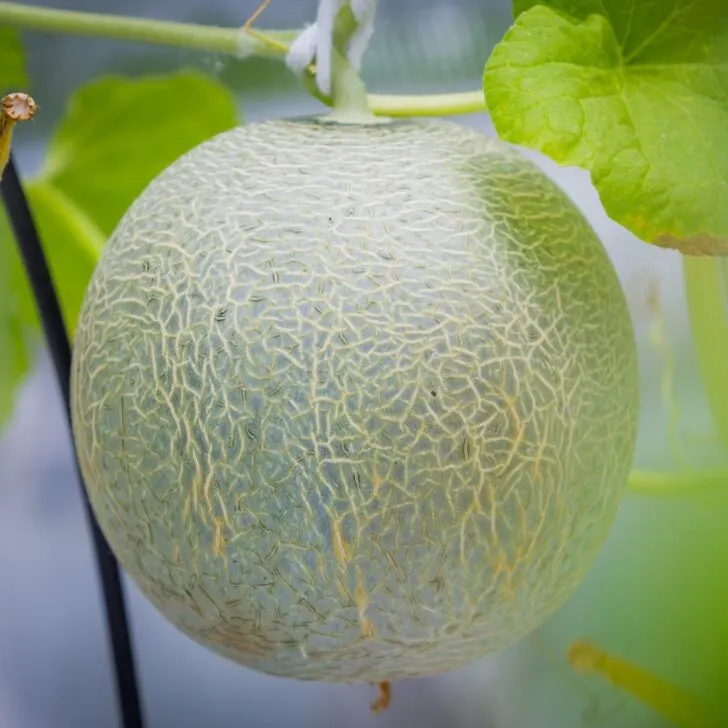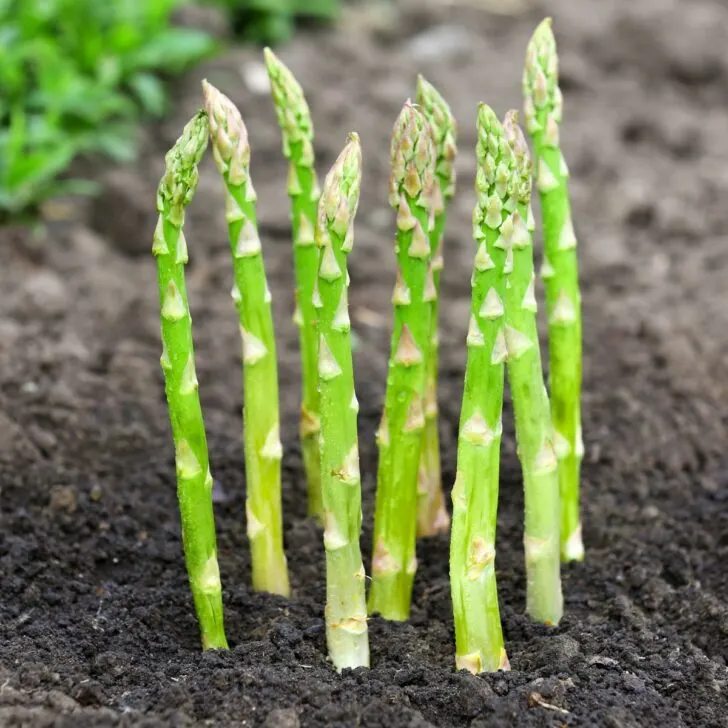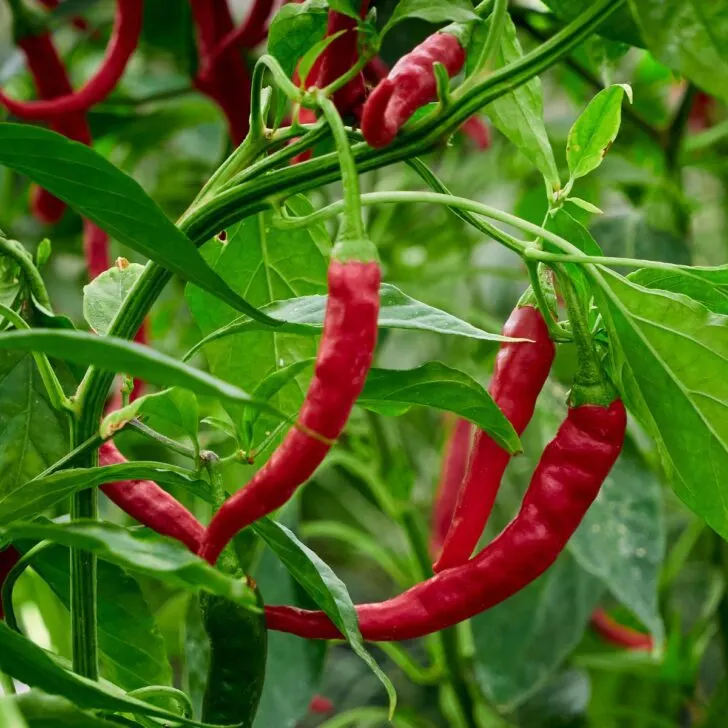Want to grow cucumbers, but think you don't have the space? Learn how to trellis cucumbers vertically on a string from a pot or the ground!
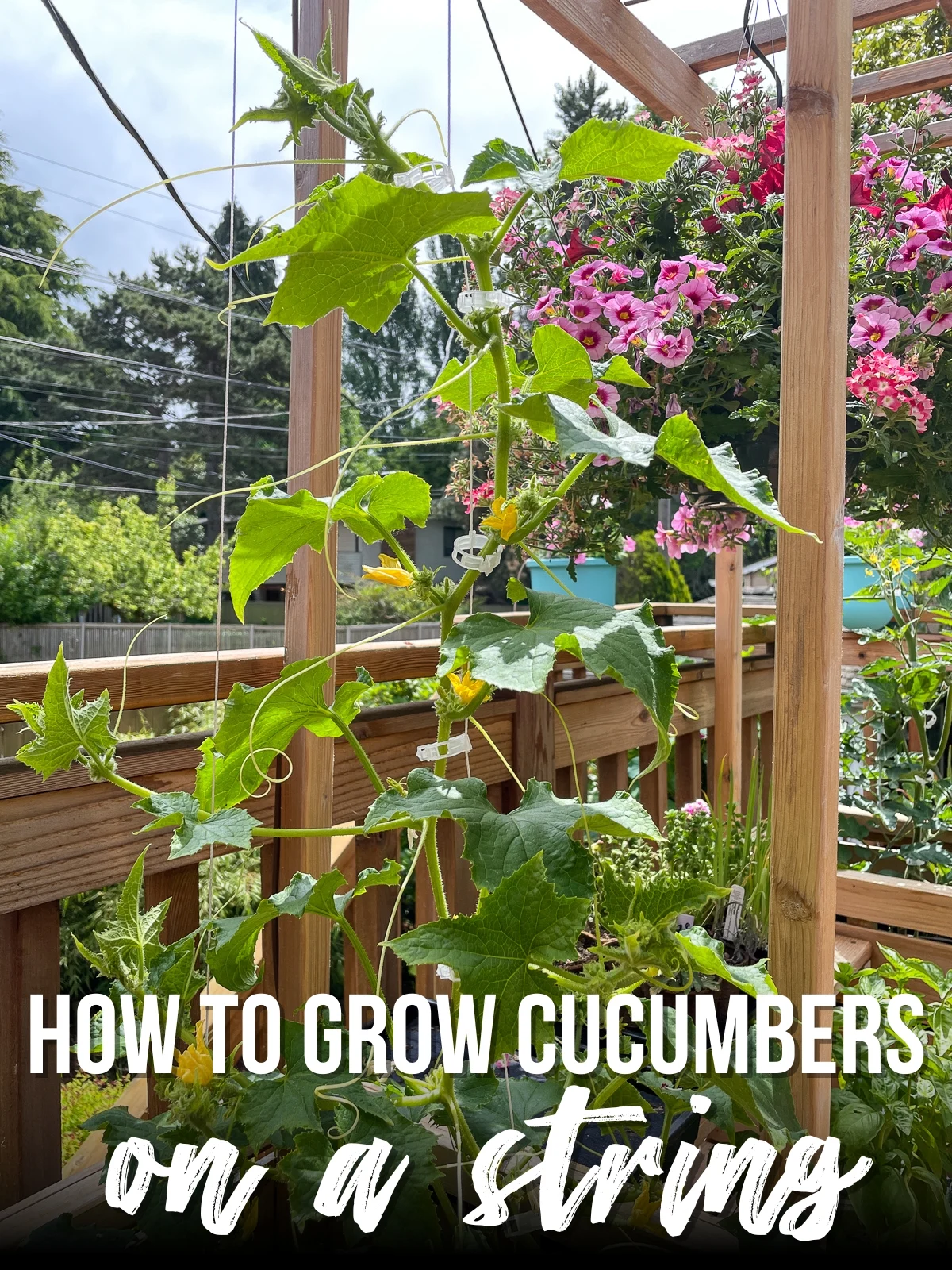
Cucumbers sprawling all over your garden can be a sight, but not always the most convenient one. Trellising cucumbers on a string isn't just about keeping things tidy. It's a game-changer for many gardeners who don't have a lot of room to grow!
When you grow cucumbers vertically, you not only save valuable garden space but also promote healthier plants. When cucumbers are off the ground, they're less prone to pests and diseases, and they get better air circulation. Plus, the fruits grow straighter and are easier to harvest.
Ready to give your cucumbers a vertical boost? Let's get growing!
This post contains affiliate links for your convenience. Purchases made through these links may earn me a small commission at no additional cost to you.
Materials needed
Trellising cucumbers on a string doesn't require a ton of fancy equipment. Here's what you'll need:
- String: Garden twine or nylon string works best. They're strong enough to support the weight of the cucumbers and resist weathering.
- Landscape staples: These are used to secure the string to the ground at the base of the plant.
- Arbor: This can be as simple as wooden stakes, metal poles, or even PVC pipes assembled into a U shape. There are lots of inexpensive options on Amazon if you don't want to build your own. Just make sure they're at least 6 feet tall to give your cucumbers ample room to climb.
- Clips or Ties: These little clips will secure your cucumber vines to the strings without slipping. You can also use these soft plant ties, although they tend to slide down.
I plant my tomatoes and cucumbers in grow bags and trellis them from the top of the arbor on this plant stand I built. It's positioned right outside our back door so I can harvest easily!
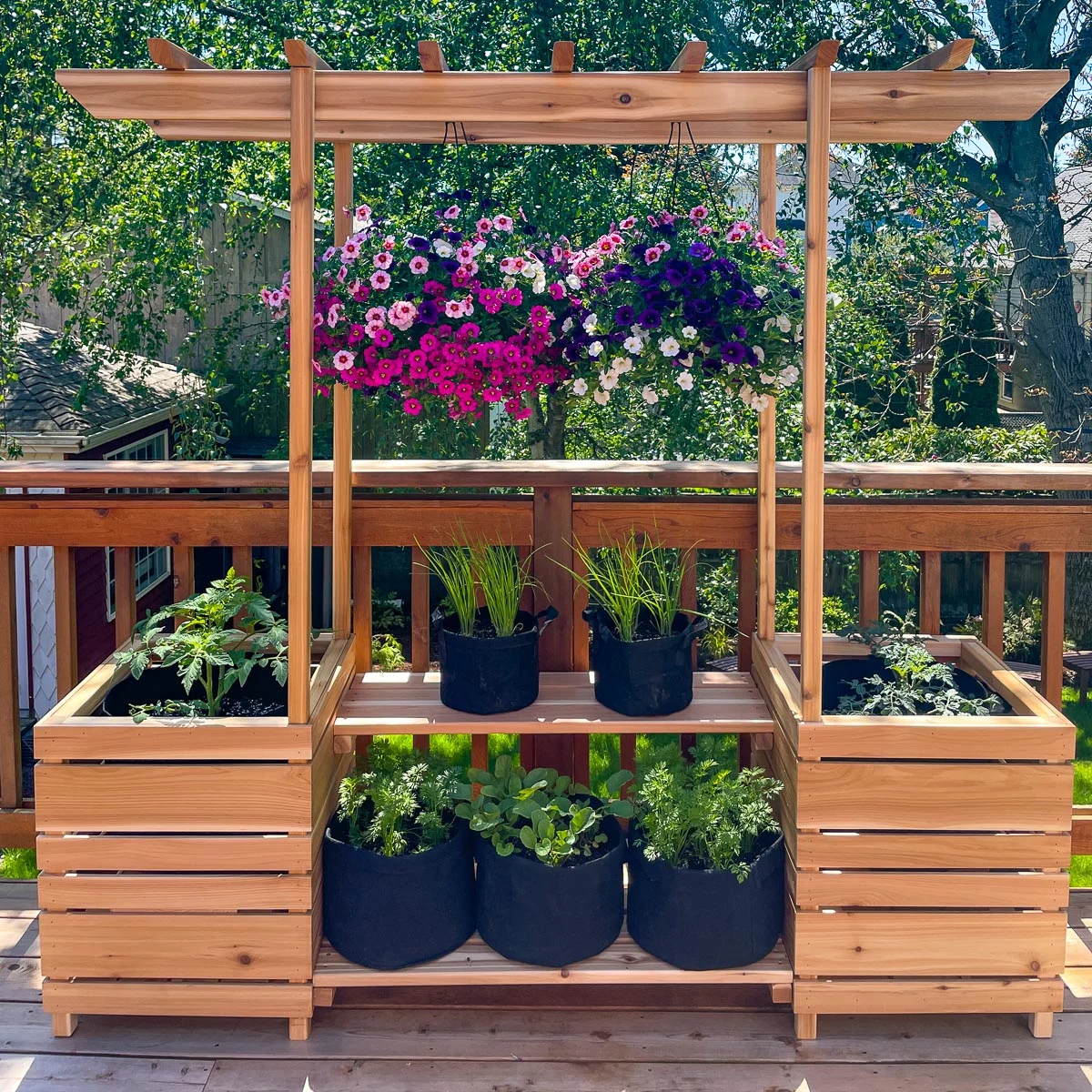
Choose the right location
Before you start setting up your trellis, it's crucial to pick the perfect spot in your garden. Here's what to keep in mind:
- Sunshine Galore: Cucumbers love the sun. Aim for a location that gets at least 6-8 hours of direct sunlight daily.
- Drainage Matters: While cucumbers enjoy a good drink, they don't like sitting in water. Choose a spot in your garden that doesn't hold on to too much moisture or use well-draining potting mix in your grow bag or pot.
- Water Source: Think about how you'll water your plants. It's a good idea to set up your trellis near a water source, whether it's a hose, a drip irrigation system, or a rain barrel. This way, you won't have to lug water too far, making your gardening chores a bit easier.
I ran our drip irrigation under the deck and poked the tubing through the slats up to the plant stand. Then I placed a loop of ¼" tubing with emitters every 6 inches around the base of the cucumber plant. A timer turns on the water for 20 minutes every morning, so I don't have to do a thing!
Setting up the trellis
Now that you've got the perfect spot, it's time to set up the support for your cucumber string trellis.
There are lots of different ways to build the support. It can be as simple as driving two tall stakes into the ground and tying a stick across the top! The horizontal support is important, because that's what the string is tied to.
The video below shows you how to build a string trellis support with two T posts, PVC pipe connectors and metal conduit. Easy peasy!
Tie the strings
I find it easier to start at the bottom and work my way up. This allows me to adjust the tension on the string without potentially breaking the cucumber plant stem.
Some people just bury the end of the string under the root ball when planting. I prefer to have the string right next to the stem to make it easier to clip.
Tie one end of string to a landscape staple. Then press it gently into the soil close to the stem. You can also see the drip irrigation in a loop around the plant in this photo.

Pull the string taut and secure the other end to the top of the support. Be careful not to pull too tight or you'll yank the staple out.
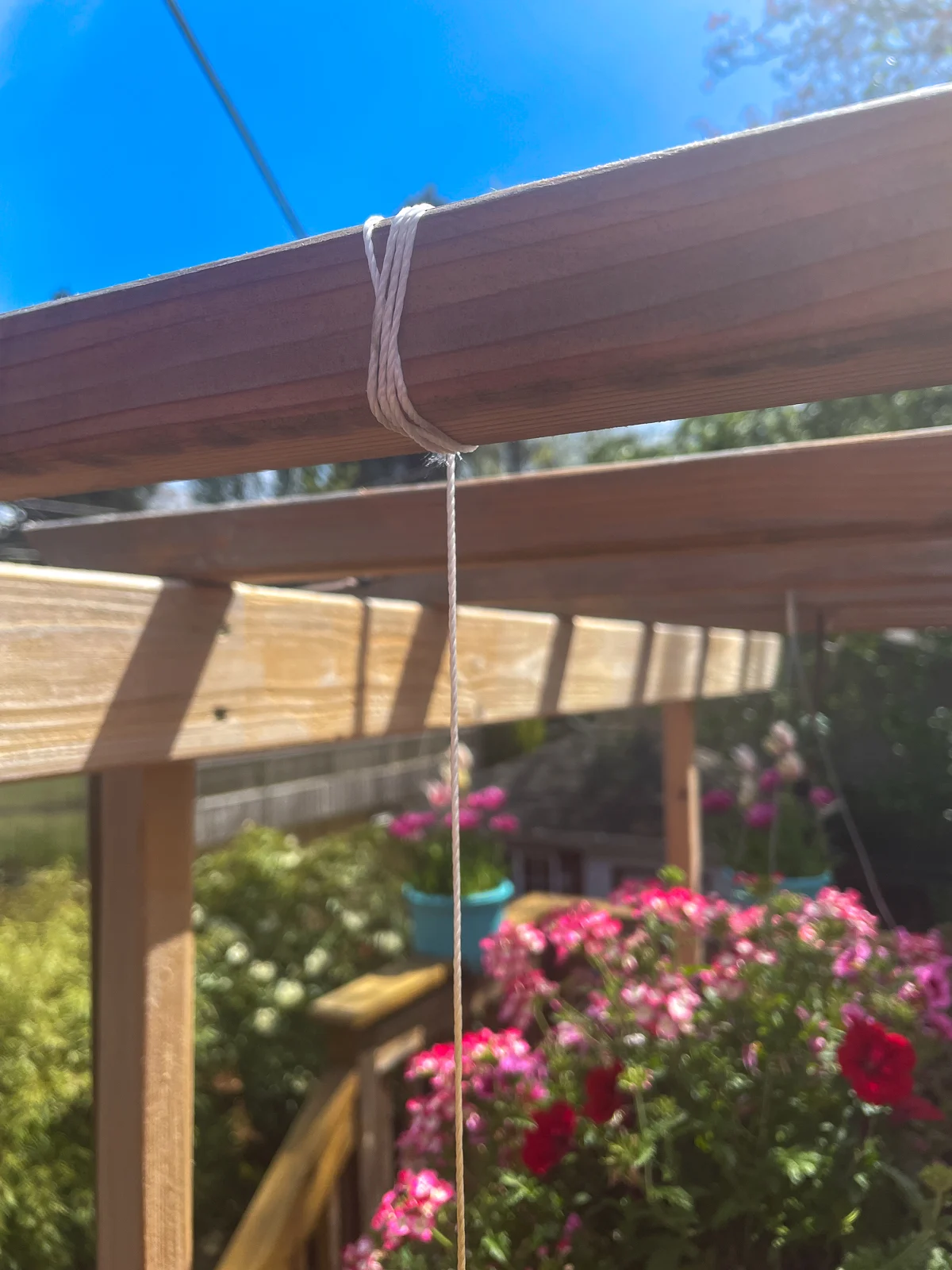
You can add a second string on the other side of the cucumber plant if you want extra support.
Clip the cucumber stem to the string
If you grew your cucumber plant from seed, it may be a little while before you have enough stem to attach to the string trellis. My seedlings were accidentally knocked over and never bounced back, so I ended up buying a Spacemaster cucumber at my local nursery.
Some people just wrap the string around the stem of the plant and continue twirling it around as it grows. But the tight string might snap off leaves and flower clusters in a strong wind, and it becomes difficult to maintain as the cucumber plant gets bigger.
I prefer to use these string trellis clips instead. The string is pinched in the center of the clip, so it doesn't slide down.
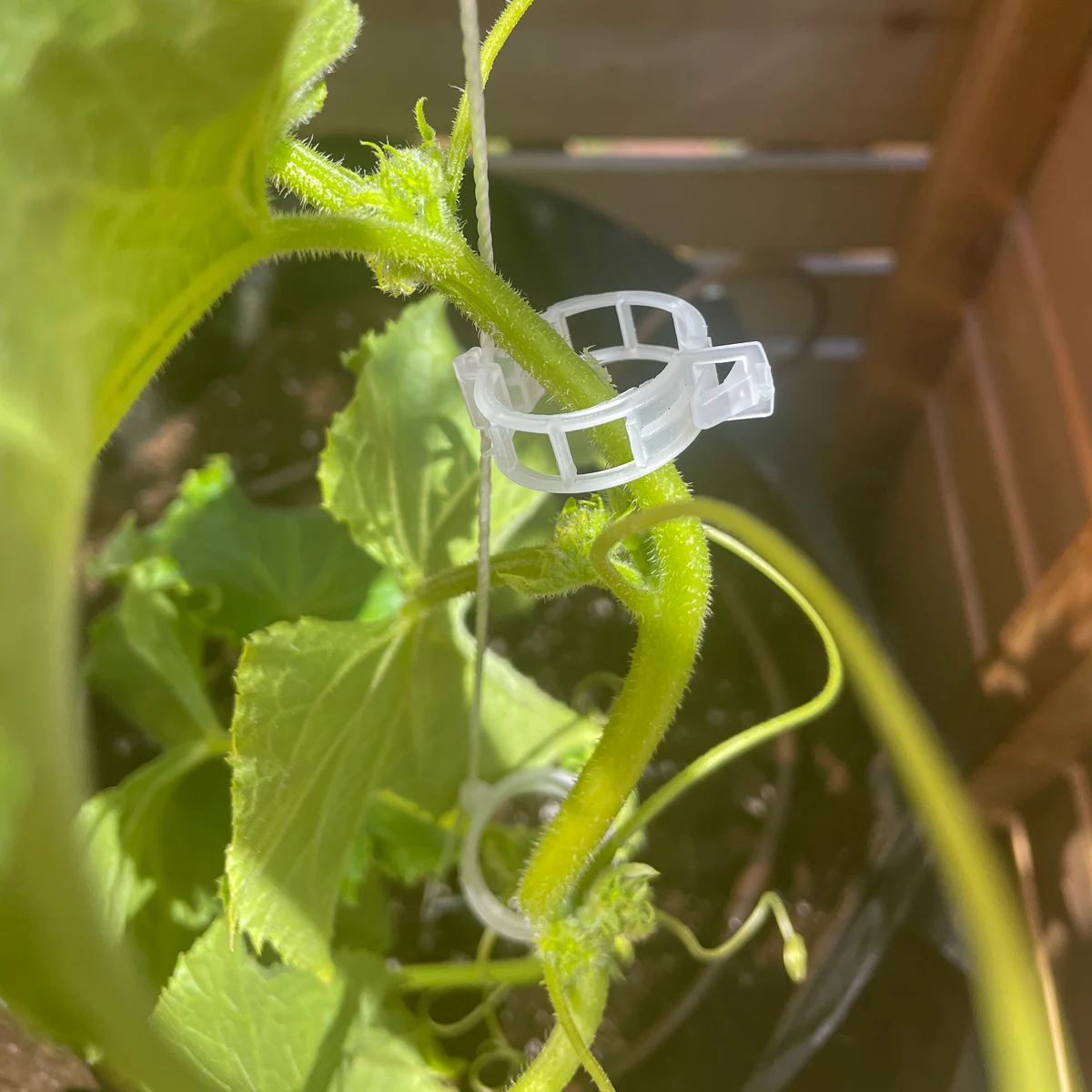
The stem is held gently against the string. There's plenty of room in the clip for movement in the wind without breaking the stem. I try to choose a spot between two leaf nodes, so it doesn't rub on anything.
While a cucumber plant does send out tendrils that may reach out and twine around a support, they're not strong enough to climb vertically on their own. The vine can get pretty heavy, especially once it's loaded down with juicy cucumbers. Relying on the tendrils alone may cause it to snap.
You can see in this photo that the tendrils aren't even trying to grab on to the string. Adding clips every 6-8 inches gives the plant plenty of support without their help. I also added a second string to support a side shoot that wanted to grow towards the back.
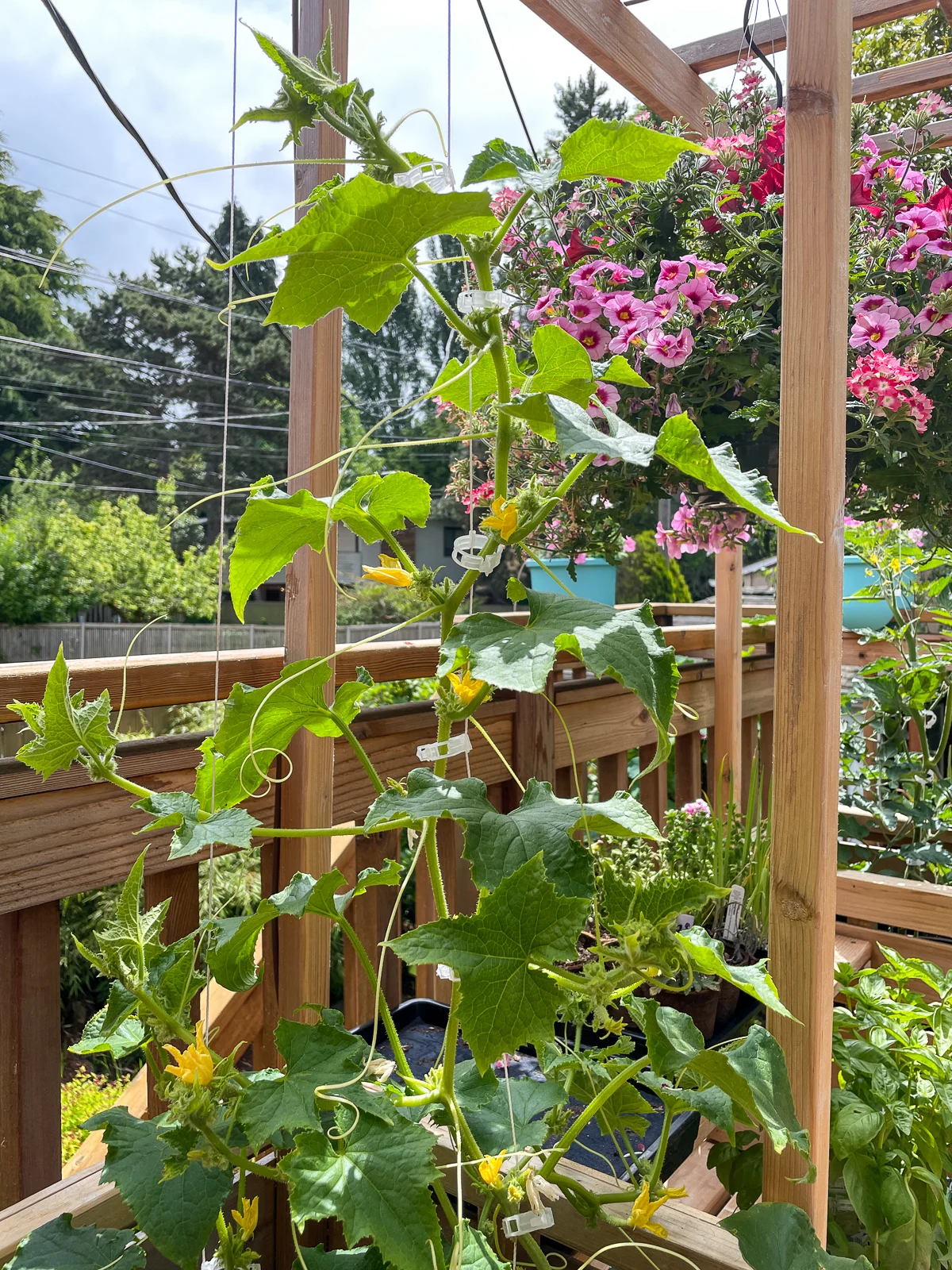
When the cucumber vine reaches the top of the trellis, you can gently guide it to grow back down the string the same way! Just loop it over the top and clip it in place.
Benefits of growing cucumbers on a string trellis
So why go through all this effort when you can just plant a few seeds in the ground and let the cucumber plant sprawl? Here are a few reasons why you should give your cucumbers something to climb:
Saves space
One obvious reason why you should grow cucumbers vertically like this is that it takes up a lot less space. Imagine all those vines from just a few plants!
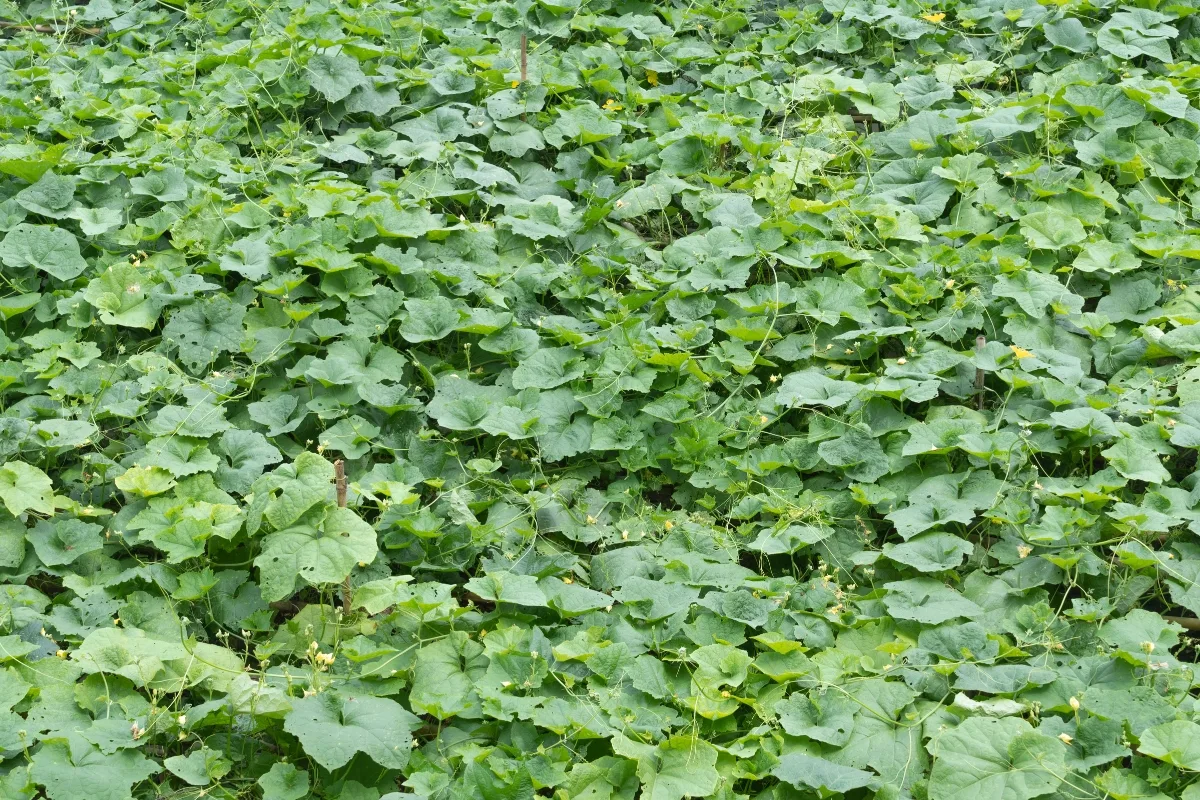
Commercial growers use string trellises to maximize their greenhouse space. Each vine takes up just a few square feet, so you can pack a lot more plants into the same area.
Improved air circulation
Elevating cucumber vines off the ground allows for better air circulation around the plants. This reduces the risk of fungal diseases, which thrive in damp, stagnant conditions.
Less disease and pest pressure
Cucumbers on the ground are more susceptible to pests like slugs and diseases such as powdery mildew. Raising them on a trellis minimizes their contact with soil-borne pathogens.

Growing cucumbers vertically also makes it easier to spot and remove the lower leaves that may have died or succumbed to disease.
Easier harvesting
Cucumbers grown on a trellis are easier to spot and reach, making the harvesting process more convenient. Plus, there's less bending and searching involved.
If you leave a cucumber on the vine for too long, it will get bitter and turn yellow or even orange. Letting cucumbers overripen can signal the plant to reduce or stop producing new fruits.

Since you can easily spot a perfectly ripe cucumber on a trellis, you can harvest before these issues occur. On the ground, it could be hidden beneath a leaf somewhere in that mound of vines!
Better quality cucumbers
When cucumbers grow on the ground, they can develop flat or discolored spots where they rest on the soil. A trellis ensures they grow straighter and more uniformly.
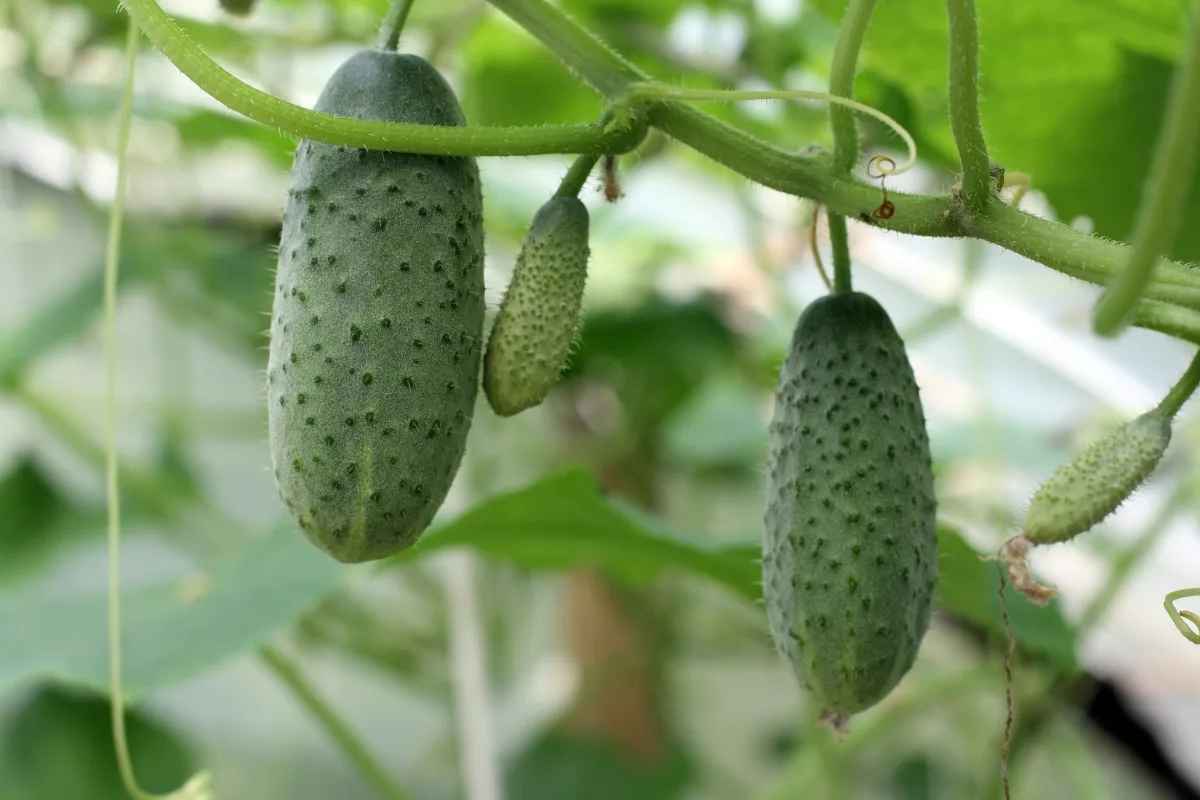
Keeping cucumbers off the damp ground also reduces the chances of fruit rot, a common issue when fruits remain in prolonged contact with wet soil.
Hopefully this article has convinced you to give this method of growing cucumbers a try! You can also use a string trellis for tomatoes, pole beans, peas, melons and squash. Just imagine how much more produce you could grow by training all these plants to grow vertically!

